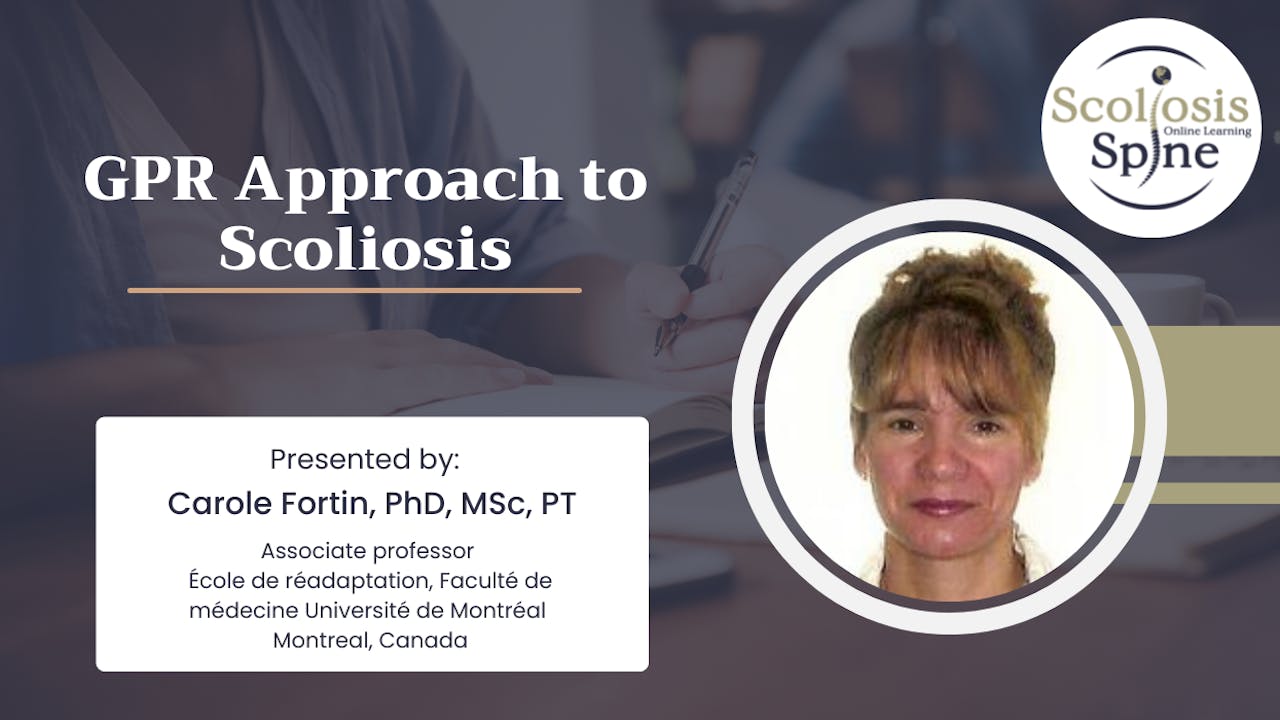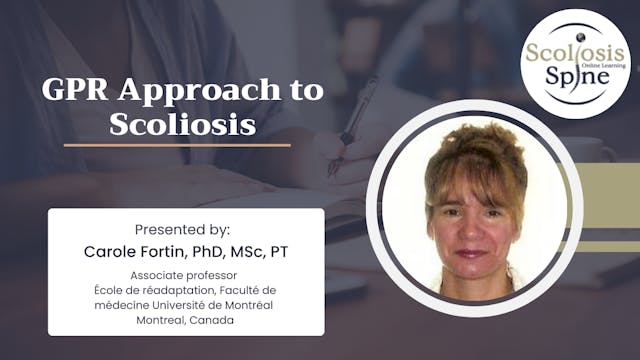GPR Approach to Scoliosis
GPR Approach Specific to Scoliosis and Related Research
Presented by:
Carole Fortin, PhD, MSc, PT (pht)
This webinar presents the Global postural re-education approach specific to scoliosis (GPR-SS) and related research. Idiopathic scoliosis is a multifactorial disorder affecting the muscular, respiratory, and sensorimotor function. Conservative brace treatment, although found to be effective in limiting scoliosis progression, does not necessarily modify muscle function and improve motor control or back pain. Prolonged wearing of the brace can even affect the respiratory function. Physiotherapy scoliosis-specific exercises such as GPR-SS offered at an early stage or added to bracing aim at preventing scoliosis progression and back pain and other associated impairments on muscular, respiratory and sensorimotor function. GPR has been developed in the 1980’s by Prof. Philippe Souchard based on biomechanical and neurophysiological evidences. GPR consists of active treatment posture and sensorimotor control exercises to regain back muscle symmetry and correct posture in daily activities. The selection of GPR specific exercises is based on a comprehensive evaluation focusing on body morphology, symptomatology, examination of muscle retractions associated with posture alterations and re-equilibration tests to assess scoliosis reducibility. Evaluation and treatment principles of GPR-SS for the understanding of the 4D neuromusculoskeletal organization of scoliosis are presented as well as some previous results and related research.
-
GPR Approach Specific to Scoliosis, Related Research
GPR Approach Specific to Scoliosis and Related Research
Presented by:
Carole Fortin, PhD, MSc, PT (pht)This webinar presents the Global postural re-education approach specific to scoliosis (GPR-SS) and related research. Idiopathic scoliosis is a multifactorial disorder affecting the muscular,...

